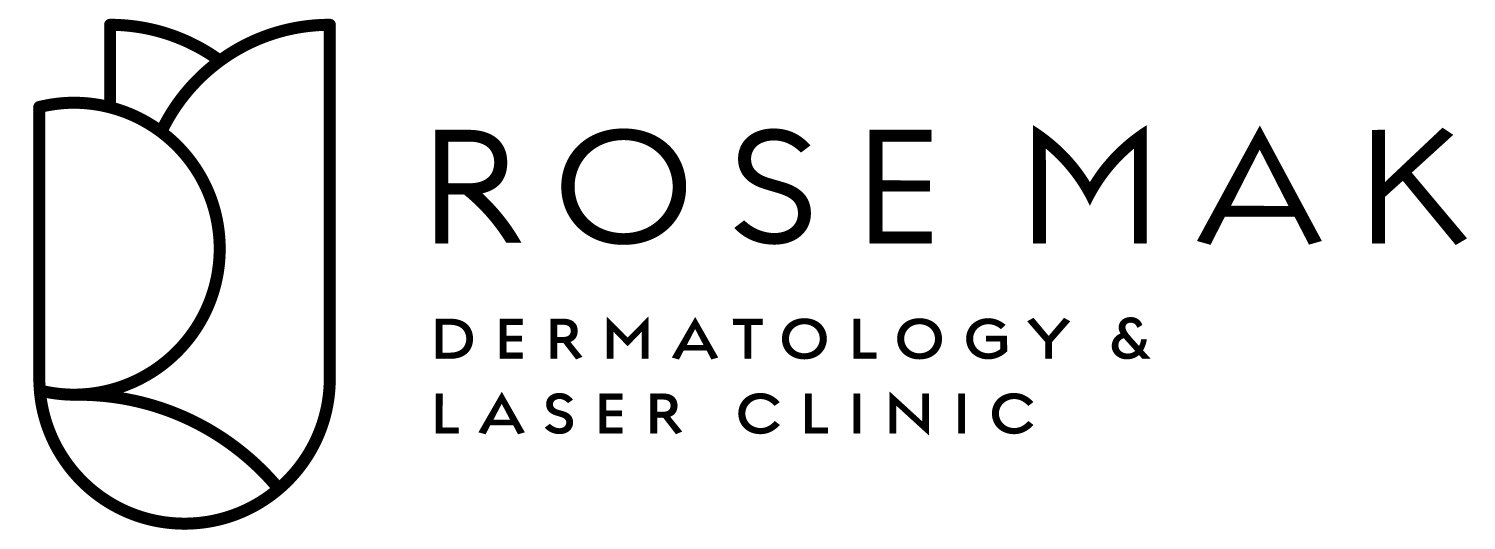暗疮诊所
麦景行医生 – 暗疮诊所
麦景行医生开设的暗疮诊所深受病人和转诊医生(包括全科医生和专科医生)的欢迎。麦景行医生对暗疮的治疗有着特殊的兴趣,乐于根据您个人的需要制定个性化的治疗计划。
暗疮是青少年和成年人面临的常见皮肤问题,也是我们诊所治疗的最常见的疾病之一。暗疮的早期治疗非常重要,若发现暗疮问题而忽略不予以治疗的话,暗疮可能会造成永久性的伤疤。
暗疮是非常普遍的皮肤病。它是因毛囊及其相关的油脂(皮脂腺)腺(称为毛囊皮脂腺单位)的紊乱而造成的一种皮肤病。
当毛囊及其相关的油脂腺堵塞和发炎时,通常会在面部、前额、胸部、上背部和肩膀出现白头、黑头或粉刺。
增大的油腺内出现油脂和死皮细胞后,造成了堵塞。这种油塞和死细胞被称为粉刺。粉刺发炎后转成暗疮。
造成暗疮的因素有很多,包含:
- 遗传因素 – 遗传因素是造成暗疮的一个因素。若青少年的父母有暗疮,他/她很有可能也会有暗疮。
- 荷尔蒙失调 – 雄激素是负责男性特征和生殖活动的一组激素。 睾丸激素是其中的一个主要雄性激素。男女都会产生雄性激素,而在青春期,该激素的水平最高。雄性激素影响颈部、后背、面部、肩膀和胸部的皮脂腺,会造成皮脂腺扩大,并产生更多的油脂(皮脂)。由于上述原因,暗疮在青春期尤为普遍。因怀孕和使用口服避孕药而造成的荷尔蒙方面的变化也会影响皮脂的产生。诸如多囊卵巢综合征等情况可能导致荷尔蒙失调失衡,从而诱发暗疮。
- 饮食因素 – 研究表明,包括乳制品、巧克力和富含碳水化合物的高血糖指数(GI)食物可能会加重暗疮 ,至于其潜在的作用机制则还有待进一步研究。因此低血糖指数(GI)的饮食可能会有助于暗疮症状的改善。
- 药物 – 包含皮质类固醇,睾丸激素或锂等成分的药物可能会造成暗疮症状的恶化。
- 压力 – 当个人承受较大的情感方面的压力时,肾上腺会产生更多的雄性激素。而这则可加重暗疮的症状。
根据暗疮的严重程度特征各不相同,包括:
- 白头 (封闭性毛孔堵塞)
- 黑头 (开放性毛孔堵塞)
- 小型的红色、易感疼痛的隆起 (丘疹)
- 粉刺 (脓包),这些是有脓的丘疹
- 皮肤表面下有较大,疼痛的肿块(结节)
- 皮肤表面下疼痛的肿块,里面有脓(囊性病变)
大约有80%的人会在任何时候受到暗疮的影响。无论任何种族背景的男女都会受到暗疮的影响。暗疮在青春期最高发,这是因为青春期性激素水平激增,而性激素可以刺激我们皮肤内的皮脂腺增大,从而增加皮脂(油)的产生,更容易形成暗疮。然而,尽管青春期和成年早期增加了暗疮的易感性,但所有年龄段的人都可能长暗疮。有些成年人,青春期没有长过暗疮,但是成年后却长了暗疮。皮肤科医生看到越来越多的女性在30多岁、40多岁、50多岁甚至更年长的年纪还会长暗疮。
虽然暗疮在青少年和成年早期的人群中更为常见,但是儿童也会长暗疮。
若儿童长了暗疮,您可以来带着孩子来麦景行医生的诊所,他会给您建议更适合儿童的暗疮治疗方案。
治疗暗疮非常重要,不能任其发展,这是因为:
- 若不治疗,暗疮消下去后会在皮肤上留下永久的疤痕
- 治疗暗疮可以提高个人的自尊
- 现在有很多有效的治疗方案
麦景行医生可以帮您控制暗疮的发展,避免结疤,避免其他的皮肤损伤,并且有办法处理已有的疤痕,使其看起来不那么显眼。
我们可根据您的个人需要而定制适合您的暗疮治疗方案。
外用药
治疗暗疮最为常见的外用处方药有:
- 类维生素A。 有乳霜也有凝胶。类维生素A药物是在维生素A中提取的。该药物在晚上使用。它可通过防止毛囊堵塞而发挥 作用,但是可能会造成局部皮肤的干燥和刺激,为缓解副作用,可以尝试每周使用三次,皮肤适应后,再逐渐增加到每日使用。
- 抗生素。抗生素可以杀灭皮肤上过多的细菌,缓解皮肤发红的现象。通常与类维生素A配合使用, 早上使用抗生素,晚上使用类维生素A。 为防止出现抗生素的耐药性,抗生素往往与过氧化苯甲酰搭配使用。
- 壬二酸。壬二酸是正常皮肤上的酵母产生的天然物质,其具有抗菌性。
口服药物
我们的皮肤科医生会与您商量使用不同的口服药物,包括:
- 抗生素。口服抗生素可以用来治疗中度至重度暗疮,减少细菌和炎症。常用于治疗暗疮的口服抗生素包含四环素类抗生素或大环内酯类抗生素。口服抗生素往往与外用的类维生素A和过氧化苯甲酰搭配使用。
- 雄激素抗剂。雄激素抗剂可阻断雄激素对皮脂腺的影响,某些妇女和少女可考虑使用此类药物。
- 口服维生素A衍生物药片可以治疗顽固暗疮以及其它治疗方案不起作用的暗疮。口服维生素A衍生物药片是只能由皮肤科医生开具的处方药。
Acne is a very common skin condition. It is a disorder of the hair follicle and its associated oil (sebaceous) gland (known as the pilosebaceous unit) in our skin.
When the hair follicles and the associated oil glands become blocked and inflamed, whiteheads, blackheads or pimples develop and usually appear on the face, forehead, chest, upper back and shoulders.
When oil and dead skin cells become trapped in enlarged oil glands, a plug is created. This plug of oil and dead cells is known as a comedone. When a comedone becomes inflamed, it turns into acne.
A number of factors may cause acne, including:
- Genetics – genetics factors play a role in acne. If a teenager’s parent had acne, he/she may be more likely to develop acne.
- Hormonal disorders – androgens are a group of hormones responsible for male traits and reproductive activities. Testosterone is an example of a major androgen. Androgens are produced by both men and women and their levels are highest in puberty. Androgens affect oil glands on the neck, back, face, shoulders and chest, causing them to enlarge and produce more oil (sebum). As a result of the above acne occurs more commonly during puberty. Hormonal changes relating to pregnancy and the use of oral contraceptives can also affect sebum production. Conditions such as polycystic ovarian syndrome may result in hormonal imbalance and predisposition to acne.
- Dietary factors – studies suggest that high glycaemic index (GI) food including dairy products, chocolate and carbohydrate-rich foods may worsen acne and further study is needed to examine the potential underlying mechanism. Hence a low-GI diet may help to improve acne.
- Medications – drugs that contain corticosteroids, testosterone or lithium may worsen acne.
- Stress – adrenal glands produce more androgens when an individual is emotionally stressed. This can worsen acne.
These may vary depending on the severity of condition and include:
- Whiteheads (closed plugged pores)
- Blackheads (open plugged pores)
- Small red, tender bumps (papules)
- Pimples (pustules), these are papules with pus
- Large, painful, solid lumps underneath the skin surface (nodules)
- Painful lumps filled with pus underneath the skin surface (cystic lesions)
Approximately 80% of the population would be affected by acne at any one time. Acne affects men and women of all ethnic backgrounds. Adolescence is the most common time to develop acne because of a surge in levels of sex hormones which stimulate the oil glands in our skin to enlarge, thereby increasing sebum (oil) production and results in an increased chance of acne formation. However, despite increased susceptibility to acne during adolescence and young adulthood, people of all ages can get acne. Some adults develop acne despite an acne-free youth. Dermatologists are also seeing a growing number of women developing acne in their 30s, 40s, 50s and beyond.
Although acne is more common in adolescents and young adults, children get acne too.
If your child has acne, you may consider bringing your child to see Dr Mak who can recommend treatments that are suitable for children.
It is important to treat acne rather than let it run its course because:
- Without treatment, permanent scars can appear on the skin when acne clears
- Treating acne improves individual’s self-esteem
- Many effective treatments are now available
Dr Rose Mak can help you control acne, avoid scarring and other skin damage and make existing scars less noticeable.
Our acne treatments can be tailored to suit your individual needs.
Topical medications
The most common topical prescribed medications for acne are:
- Retinoids. These come as creams and gels. Retinoid drugs are derived from vitamin A. This medication is applied in the evening. It works by preventing plugging of the hair follicles but may cause local dryness and irritation and to help reduce these potential treatment side effects, one may begin treatment with three times a week, then eventually increased to daily as your skin becomes used to it.
- Antibiotics. These kill excess skin bacteria and reduce redness of the skin. They are usually used in combination with a retinoid, with the antibiotic applied in the morning and the retinoid in the evening. The antibiotics are often combined with benzoyl peroxide to prevent the likelihood of antibiotic resistance.
- Azelaic acid. Azelaic acid is a natural material produced by a yeast living on normal skin and has antibacterial properties.
Oral medications
Our dermatologist will discuss different oral medications that can be used including:
- Antibiotics. Oral antibiotics may be used to treat moderate to severe acne to reduce bacteria and inflammation. Common oral antibiotics used to treat acne include tetracycline antibiotics, or a macrolide antibiotic. Oral antibiotics are commonly used in combination with topical retinoids and benzoyl peroxide.
- Anti-androgen agents. Anti-andorgen agents block the effects of androgen hormones on the sebaceous glands and may be considered in certain women and adolescent girls.
- Oral vitamin A derivative tablets and can treat persistent acne and acne that does not respond to other treatments. Oral vitamin A derivative tablets can only be prescribed by dermatologists.
